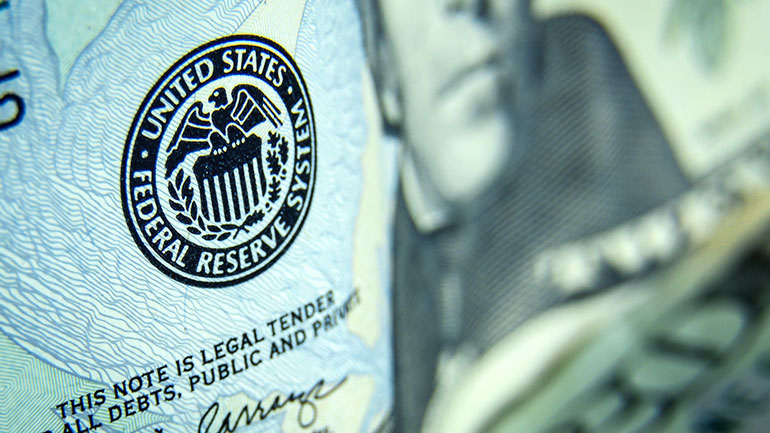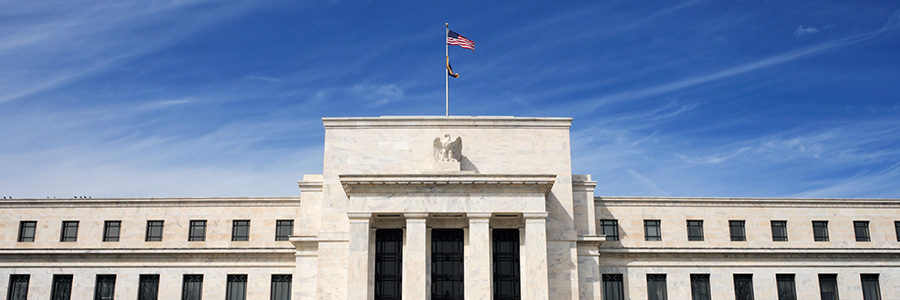Debt Ceiling: Livin' on a Prayer
By: Priya Misra, Gennadiy Goldberg, Molly McGown, Oscar Munoz, Mark McCormick
May 19, 2023 - 9 minutes 30 seconds
Recently, Treasury Secretary Yellen revised the estimate for the X-date to June 1 and the Congressional Budget Office (CBO) confirmed that Treasury may run out of cash in early- June. The X-date is the point when Treasury may run out of room under the debt ceiling and will no longer be able to meet payment obligations, resulting in a default on the debt.
What are the politics around raising the debt ceiling?
There is currently little agreement about how the debt ceiling will be addressed. Republicans passed the highly partisan Limit, Save, Grow Act in late-April, which included a $1.5tn increase in the debt ceiling but focused largely on repealing many of the programs introduced in President Biden's Inflation Reduction Act (IRA). This is unlikely to advance in the Senate but can be seen as a starting point for negotiations. Democrats continue to insist on a "clean" debt ceiling increase without any strings attached and maintain that the budget should be negotiated separately. Republicans, on the other hand, want to align the two issues and force a reduction in government spending as a pre-requisite for a debt ceiling increase.
While we do not expect the U.S. to default on the debt, we expect negotiations to go down to the wire, resulting in a risk-off market reaction. We see two paths toward resolution:
- Longer-term deal until early- 2025, accompanied by spending cuts: This would be the ideal scenario for markets as it would remove debt ceiling uncertainty until after the 2024 presidential election. However, a long-dated deal would almost certainly need to include provisions for spending cuts or the prospect of deficit reduction in the future. Note that both sides are far apart from such an agreement, and it may take a significant amount of time to negotiate a deal palatable to both parties.
- Short-term extension to provide more room for negotiation: Given that Congress also needs to negotiate a funding bill before September 30 or face a government shutdown, there is a possibility that both sides pass a "clean" debt ceiling extension until September.
Is a rating downgrade possible?
While we do not expect S&P to downgrade the U.S. further, Moody's or Fitch may put the U.S. on negative outlook or even negative watch due to further debt ceiling brinksmanship. The two rating agencies currently rate the U.S. Aaa and AAA, respectively, and view the outlook as stable. A move to lower or threaten to lower the U.S. credit rating could result in a broad risk-off market reaction.
If one bond defaults, do all bonds default?
There is no cross-default provision for U.S. Treasuries according to SIFMA, suggesting that if one CUSIP is affected, "there would not be a cross-default with other Treasury securities with different maturities." This suggests that while investors are likely to avoid bills or notes that mature just after the X-date or coupon securities that pay coupons on June 15, there should not be a spillover to other Treasury securities.
Can debt payments be prioritized?
Historically, the Treasury has openly rejected the idea of payment prioritization as operationally impossible. Although this idea resurfaced during each recent debt ceiling crisis thus far, both Treasury Secretaries Lew and Mnuchin rejected the idea of prioritization. Secretary Yellen has also rejected the idea that prioritizing payments is a viable solution. Note that Treasury will either make all coupon and principal payments or if they do not have sufficient cash to make all payments, they will make none.
Can the Treasury or Biden go it alone?
Two options have attracted attention, but we do not believe Treasury will resort to any of these more "creative" solutions:
- Mint a platinum coin: Treasury could mint a platinum coin with a $1tn valuation and subsequently deposit the coin at the Federal Reserve. Note, however, that such an action would likely be challenged in court and may prove problematic if the Fed refuses to accept the deposit of the coin.
- Invoke the 14th Amendment: The 14th Amendment to the U.S. Constitution contains a provision noting that, "The validity of the public debt of the United States...shall not be questioned." This suggests that the standoff in Congress is actually in violation of the U.S. Constitution, allowing the president to unilaterally increase the debt ceiling. Note that this would likely escalate the debt ceiling standoff into a full-blown constitutional crisis, creating a battle that would go before the Supreme Court.
What does default mean for a Treasury holder?
Given the market's desire to be prepared for the worst-case scenario, SIFMA and TMPG have done a significant amount of operational preparation around the dynamics in case of a default. In the event of a default, several scenarios are possible:
- Delay of principal payment: This would extend the maturity date of an issue, resulting in a new operational maturity date on Fedwire for coupon and principal payments. These securities can continue to be traded in the market. The maturity extension decision will be made "one day at a time" where each day Fedwire will make the determination if Treasury has the ability to make the payment or not.
- Delay of coupon payment: Securities with delayed coupons remain tradable on Fedwire. The coupon payment would be made as of the close of business the day before the originally-scheduled coupon payment date within Fedwire — this allows the system to continue to track the proper coupon amounts with less manual intervention.
- Treasury fails to make payment and Fedwire remains unchanged, rendering impacted instruments non-transferable: This is a highly unlikely scenario, but if no extension is made on the maturity date in Fedwire, the securities cannot be transferred to another holder. This scenario would be extremely challenging across markets.
In the case of a default, pricing vendors should continue to price the assets at a non-zero level.
How will markets react?
Investors tend to ignore debt ceiling deadlines until they draw closer and then only begin to pay attention when it looks like the ceiling may not be raised in a timely fashion. Given the role of Treasuries in global and domestic finance, even a small payment delay could have catastrophic consequences.
If the June 1 X-date approaches without a deal in place, markets would likely start to react in a risk-off fashion with Treasuries rallying and equities declining. There are already signs of market dislocation, with 1y U.S. Credit Default Swaps (CDS) trading at 164bp — near the highest levels on record. Note that ISDA would make a determination on whether a missed payment triggers U.S. CDS. In addition, some widening in the CDS today reflect that CTD bonds are heavily discounted due to the rise in rates over the past year.
Markets would likely react in the following ways to the threat of a debt ceiling breach:
- Bills to cheapen: The bill market has already reacted to the debt ceiling threat, with bills maturing just after the June 1 X-date trading at much higher yields and wider OIS levels relative to bills further out the curve. This is likely due to money market funds and other investors avoiding the "at risk" securities amid an unwillingness to take the risk of a payment delay.
- Impacted coupon bonds could cheapen: Treasury bonds and notes with coupon payments close to the debt ceiling date could also trade somewhat cheaper relative to their peers. The Treasury securities with a June 15 coupon date would be viewed as more likely to delay payment than their peers.
- Debt default to create a broad-based risk-off: A worst-case scenario of the Treasury failing to make timely payments on the debt would likely result in a significant risk-off in markets. We would expect equities to decline sharply as a flight to quality trade develops. Similar to the dynamic in 2011, we would expect a flight into Treasuries as the market views longer-duration securities as a safe haven. We would expect the curve to bull steepen, but not as much as in 2011 since high inflation readings currently would make it difficult for the Fed to cut rates aggressively. We would expect dealer balance sheets to become scarce and Treasuries should underperform swaps resulting in tighter swap spreads.
What does default mean for the U.S. economy?
Given the role of Treasuries in global and domestic finance, even a short payment delay could have catastrophic consequences. While a default would have significant consequences, even a move closer to the X-date without a deal at hand could leave the market nervous. We see two paths through which markets could react:
- Confidence channel: As we move closer to the debt ceiling X-date, increased media coverage can weigh on business and consumer confidence, potentially leading to knock-on effects on investment and spending.
- Direct default implications: If the debt ceiling is not raised by the X-date, the Treasury will stop making social security payments, payments to troops, and monthly child tax credits, among many other payments. A breach in the debt ceiling would cause damage to the US economy. The White House published an analysis stating that even a brief default is likely to result a loss of 500k jobs and pull GDP 0.6% lower while a longer default would likely result in the loss of 8.3mn jobs and 6.1% decline in GDP. Lending standards would tighten even further to offset costs and cause businesses and households to be even less able to borrow.
What does a standoff or default mean for the Fed?
The Fed is likely to view a debt ceiling standoff or actual default as a source of significant market uncertainty. We would expect QT to be paused in a default scenario. Note that QT adds to funding needs of the Treasury, so it would make sense to pause QT. However, the Fed is likely to separate monetary policy and steps taken for market functioning and financial stability. Above-target inflation and a tight labor market make it difficult for the Fed to use monetary policy to help.
Given that the next FOMC meeting will be on June 14, the impact of the debt ceiling uncertainty will be binary. Either the debt ceiling is raised well ahead of the FOMC decision (before the June 1 X-date) or a "worst case scenario" (debt default) will make the Fed unlikely to increase rates due to enormous uncertainty and likely high market volatility. Note that a short-term debt ceiling increase into the fall could continue to keep debt ceiling uncertainty in place for a longer period of time, potentially weighing on economic growth momentum if it is coupled with government funding negotiations (as this could lead to a temporary government shutdown after September 30).
While the Fed has not brought up any facilities they can launch in case of default, in a default scenario the Fed could swap affected bonds with bonds from the Fed's SOMA portfolio. This was discussed by the Fed in the run up to the 2013 debt ceiling situation. However, this will only provide relief in the very short term. The Fed also discussed at that time that the supervisory and regulatory treatment of Treasuries and GSEs will not change even in a default scenario. The Fed also promised to work with banks since their capital ratios will be negatively impacted.
Our US rates and macro strategists as well as our policy and political expert Nicolas Checa, Founder of Alpha Policy, conducted a Virtual Roundtable for colleagues and clients on the U.S. debt ceiling. Clients can watch the replay on the TD Securities Market Alpha portal

Managing Director and Global Head of Rates Strategy, TD Securities

Managing Director and Global Head of Rates Strategy, TD Securities

Managing Director and Global Head of Rates Strategy, TD Securities

Director and Senior U.S. Rates Strategist, TD Securities

Director and Senior U.S. Rates Strategist, TD Securities

Director and Senior U.S. Rates Strategist, TD Securities

US Rates Strategist, TD Securities

US Rates Strategist, TD Securities

US Rates Strategist, TD Securities

Vice President and US Chief Macro Strategist, TD Securities

Vice President and US Chief Macro Strategist, TD Securities

Vice President and US Chief Macro Strategist, TD Securities

Director and Global Head of FX and EM Strategy, TD Securities

Director and Global Head of FX and EM Strategy, TD Securities

Director and Global Head of FX and EM Strategy, TD Securities




